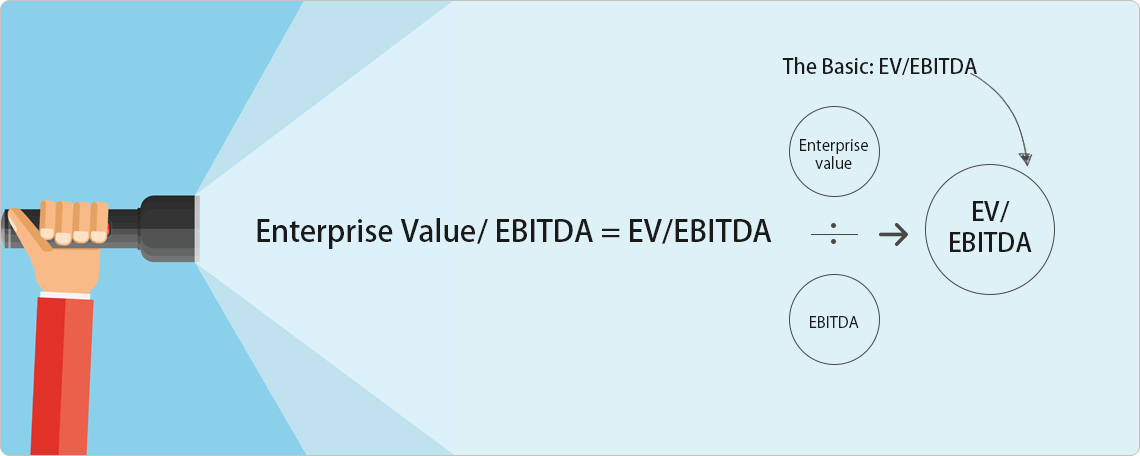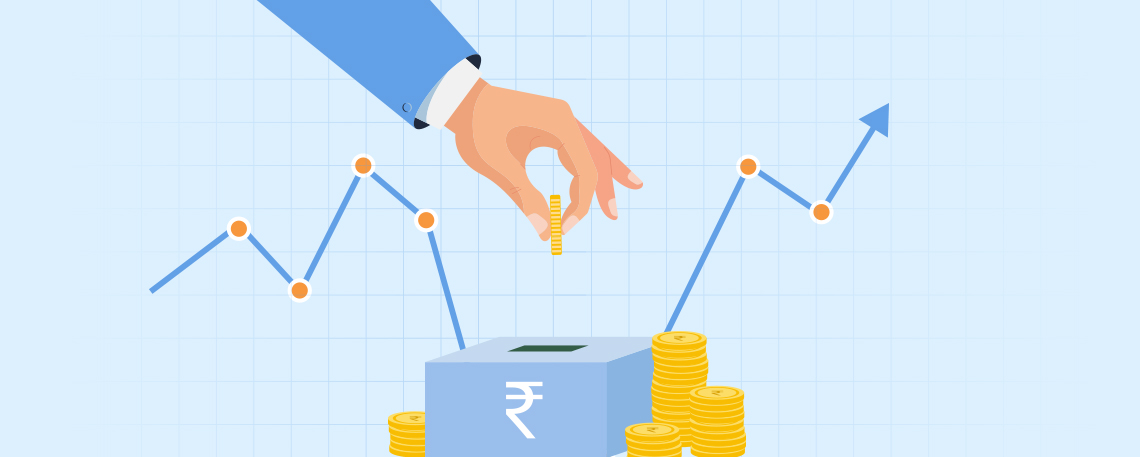Using the EV/EBITDA multiple smartly!
June 18, 2018
|
The most important rule in equity investing is – you have control over your ‘buy’ price; however, the market decides the price of the stock going forward. You will naturally want to invest at the lowest price possible.
Most investors use the price-to-earnings (P/E) ratio to look for stocks available at reasonable prices. P/E ratio is simply the stock’s market price divided by its earnings per share (or EPS). For more on P/E, read our blog ‘Using the P/E ratio smartly!'
P/E is a straightforward and widely used ratio; however, it does have some disadvantages. This is where EV/EBITDA works better. Before we understand the differences between these two ratios, let’s quickly understand EV/EBITDA.
EV/EBITDA is the enterprise value (EV) of a stock divided by its earnings before interest, taxes, depreciation and amortization (EBITDA).
Enterprise Value (EV) / EBITDA (Earnings Before Interest, Taxes, Depreciation and Amortization)
…where Enterprise Value = the company’s market capitalization + debt + preferred stock – cash/cash equivalents… in other words, this is the total value of a company.
Usually, a low EV/EBITDA ratio could mean that a stock is potentially undervalued while a high EV/EBITDA will mean a stock is possibly over-priced. In other words, the lower the EV/EBITDA, the more attractive the stock is. Generally, EV/EBITDA of less than 10 is considered healthy. However, the average EV/EBITDA varies from industry to industry.
- Market capitalization = total shares issued by the company x its share price
- Preferred stock = preference shares
- Cash/cash equivalents = cash in bank account + liquid investments
Forward EV/EBITDA - the key to assess the company’s future performance
In investing, the ability to assess the future value of a company is what differentiates a successful investor from the rest. Like in the case of forward P/E explained in our blog on P/E, one should consider the forward or expected EV/EBITDA. This is computed as -
Forward EV/EBITDA = EV / forward (expected) EBITDA
Nilkamal Ltd – A practical example on EV/EBITDA valuations
From gross sales of approximately Rs.397 crore in FY 2005, Nilkamal’s sales went up to Rs.2,162 crore in FY March 2017; PAT (profit after tax) rose from Rs.10.73 crore to Rs.119.15 crore. Nilkamal was quoting at Rs. 65.20 and Rs. 1,951.55 on 31 March 2005 and 31 March 2017 respectively. The company’s EV/EBITDA multiple rose from 3.65x to 12.54x!
Considering the EV/EBITDA (which sharply increased from the range of 3.65x in 2005 to 12.54x in 2017), indicates that Nilkamal was available at an extremely attractive price in 2005. The multiples expanded as the company showed expansion of sales and earnings and hence, the forward EBITDA was higher.
Suppose an investor had bought shares of Nilkamal in the year 2008 when the company was quoting at a trailing EV/EBITDA of about 6.24 times, he would have actually purchased the stock at a very low price considering its forward EV/EBITDA, which was about 3.05 considering the EBITDA of March 2011. Considering the price of the stock (Rs. 1951.55 as on 31 March, 2017), the investor would have been rewarded with a 30-bagger stock!
| Description | Mar 05 | Mar 06 | Mar 07 | Mar 08 | Mar 09 | Mar 10 | Mar 11 | Mar 12 | Mar 13 | Mar 14 | Mar 15 | Mar 16 | Mar 17 |
|---|---|---|---|---|---|---|---|---|---|---|---|---|---|
| Gross Sales | 397.85 | 453.92 | 591.37 | 955.64 | 1099.34 | 1234.99 | 1499.71 | 1718.65 | 1940.03 | 1843.54 | 2023.45 | 2059.95 | 2162.16 |
| EBITDA | 37.48 | 35.77 | 36.40 | 90.50 | 106.75 | 139.71 | 140.03 | 162.43 | 140.17 | 160.64 | 160.76 | 235.86 | 237.70 |
| EV/EBITDA (x) | 3.65 | 6.65 | 7.94 | 6.24 | 4.01 | 4.30 | 5.17 | 4.10 | 4.54 | 3.69 | 5.09 | 7.37 | 12.54 |
P/E versus EV/EBITDA
While the P/E ratio is a widely used ratio to compute a company’s value, here are some advantages that the EV/EBITDA ratio offers:
P/E only considers the company’s equity capital (debt on the company’s books are ignored). EV/EBITDA, on the other hand, also considers debt on a company’s books; it is a more holistic ratio and gives a clearer image of a company’s value and its earnings potential. In fact, EV/EBITDA is a useful tool to assess the value of companies with high levels of debt and/or depreciation.
EV/EBITDA removes the impact of non-cash expenses like depreciation and amortization that dilute net earnings, and therefore, gives a more realistic picture of a company’s profitability. For example, let’s say a new company sets up a plant and purchases equipment funded through debt. If the company goes public (issues equity to the public through an IPO) and uses the funds to pay off debt, its profits will increase going forward. Besides, the company will book higher depreciation on the plant and equipment. Since EV/EBITDA ignores the interest and depreciation cost, it will help assess the profit growth potential going forward.
In case of loss-making companies, the P/E ratio becomes irrelevant (since the company has negative earnings). However, the EV/EBITDA of a loss making company may be positive (in other words, the company may be making operating gains although its net profit may be negative due to interest payouts, taxes and depreciation/amortization). This may be especially useful to spotting companies that may be good investment bets going forward.
P/E ratio
- Only considers equity capital (not debt)
- Includes non-cash expenses, hence does not give a realistic picture of profitability
- Not useful in case of loss making companies
EV/EBITDA ratio
- Considers equity and debt – provides holistic valuation
- Gives a more realistic picture of profitability
- Useful to spot loss making companies that may be attractive investments going forward
So is EV/EBITDA a perfect ratio? The answer is ‘No’. EV/EBITDA comes with its own shortcomings. Investors should not use only the EV/EBITDA ratio to decide an investment’s future potential performance. EV/EBITDA cannot be used to compare companies across different industries since each industry has its own level of debt requirement. For instance, infrastructure companies will be more debt-heavy as compared to FMCG companies.
To achieve a holistic view of a company’s future potential, it’s important to use a number of ratios such as P/E, EV/EBITDA, P/B (Price to Book), etc. while also considering other important factors such as quality of the management, prospects of the industry the company belongs to, macro factors, etc.
We, at StockAxis, are constantly on the lookout for great businesses run by honest promoters that are available at the right price with sufficient margin of safety. Our stringent stock selection guidelines and clearly stipulated entry and exit points make equity investing a ‘rich’ experience for our investors!
Happy investing!









